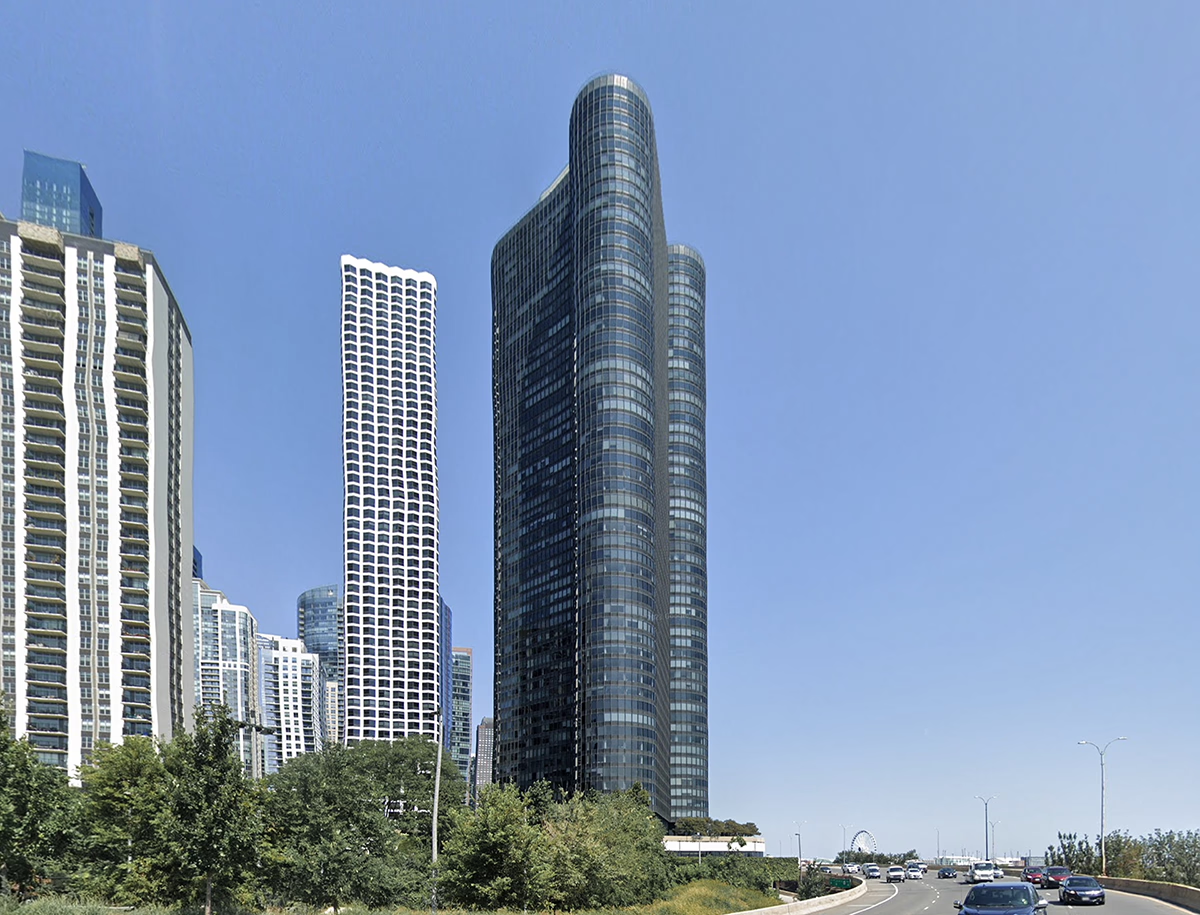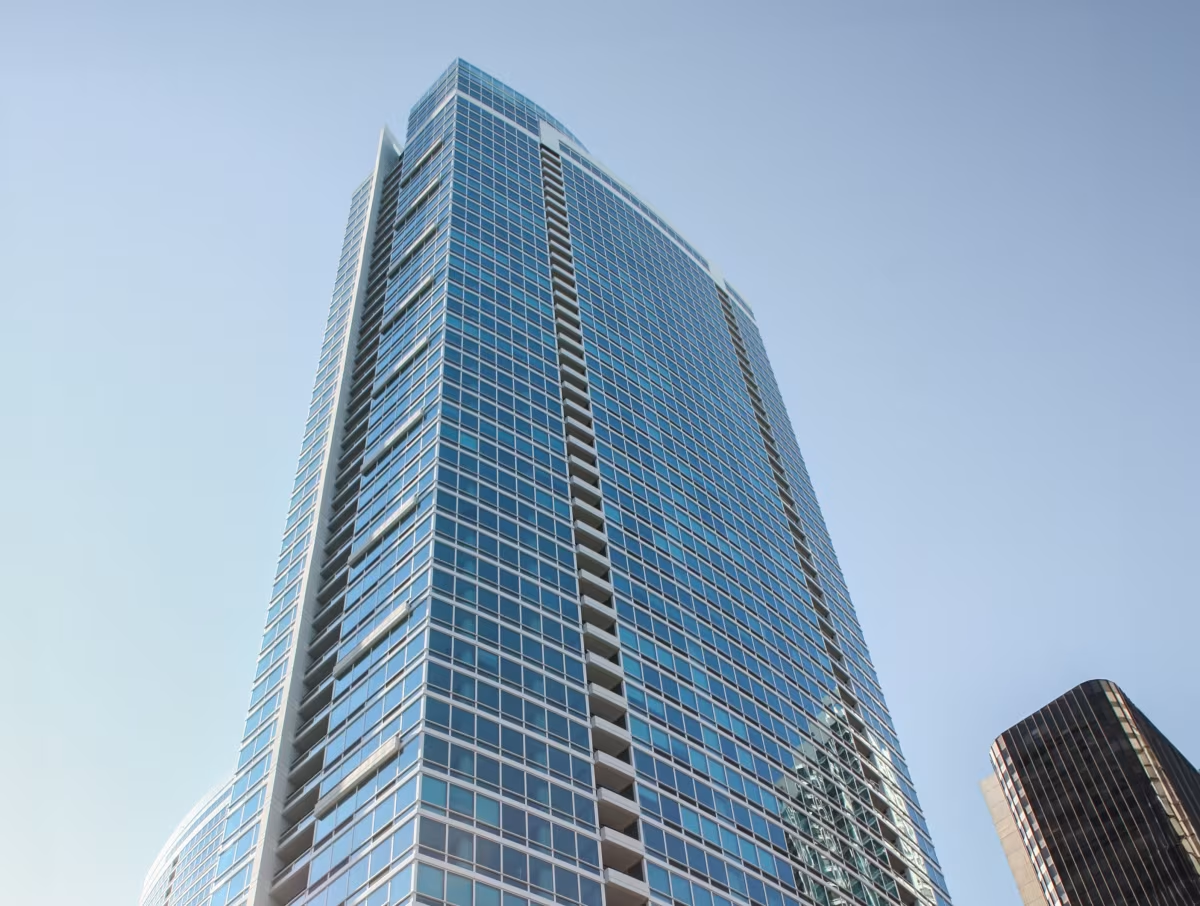155 Harbor Condominium vs Atwater Apartments Building


Comparing the 155 Harbor Condominium and the Atwater Apartments Building is particularly interesting because they share the same skyline in Chicago, IL, and were both designed by Solomon Cordwell Buenz. However, they were completed more than 34 years apart.
This offers a unique perspective on how the architect's style and the city's architecture evolved over time.
Height & Size
These two towers present an interesting contrast in their proportions. The Atwater Apartments Building rises higher at 554ft (169m), while the 155 Harbor Condominium reaches 551ft (168m). However, the 155 Harbor Condominium accommodates more floors with 54 levels above ground, compared to 53 floors in the Atwater Apartments Building.
This suggests different approaches to interior space design. The Atwater Apartments Building has an average floor-to-floor height of approximately 3.2m, while the 155 Harbor Condominium has more compact floors averaging around 3.1m each.
These different proportions likely reflect the specific needs each building was designed to serve, whether driven by zoning regulations, client requirements, or the intended use of the spaces within. The contrast shows how architects can achieve different spatial experiences even when working with similar overall building scales.
Architectural Style
The 155 Harbor Condominium was designed in the Modern style, while the Atwater Apartments Building reflects the principles of Contemporary.
The 155 Harbor Condominium represents a late expression of the Modern, a style already in decline in 1975 when it was completed. By contrast, the Atwater Apartments Building followed the then mainstream Contemporary, embodying the dominant architectural direction of its time.
With 34 years between them, the comparison also reflects how quickly architectural priorities can shift from one dominant language to another.
Uses
Both the 155 Harbor Condominium and the Atwater Apartments Building were designed to serve as residential towers, and that has remained their main use since their completion, serving similar roles in the urban fabric.
In terms of capacity, the 155 Harbor Condominium offers 742 apartments, while the Atwater Apartments Building provides 480 units.
The Atwater Apartments Building also provides 401 parking spaces.
Structure & Facade
Both the 155 Harbor Condominium and the Atwater Apartments Building rely on a Frame structural system.
A frame structure uses a grid of columns and beams to carry the building's loads. This frees the walls from structural duties, allowing for flexible floor plans and larger windows.
They also employ the same type of facade, a Curtain Wall facade.
A curtain wall is a non-load-bearing facade hung from the structural frame. It is anchored to floor slabs and transfers only its own weight and wind loads, allowing for sleek, glassy exteriors.
| 155 Harbor Condominium | Atwater Apartments Building | |
|---|---|---|
| Solomon Cordwell Buenz | Architect | Solomon Cordwell Buenz |
| 1972 | Construction Started | 2007 |
| 1975 | Year Completed | 2009 |
| Modern | Architectural Style | Contemporary |
| Residential | Current Use | Residential |
| 54 | Floors Above Ground | 53 |
| 168 m | Height (m) | 169 m |
| 742 | Residential Units | 480 |
| Frame | Structure Type | Frame |
| Concrete | Vertical Structure Material | Concrete |
| Concrete | Horizontal Structure Material | Concrete |
| No | Facade Structural? | No |
| Glass | Main Facade Material | Glass, Concrete |
| IL | State | IL |
| Chicago | City | Chicago |
| 155 North Harbor Drive | Address | 355 East Ohio Street |